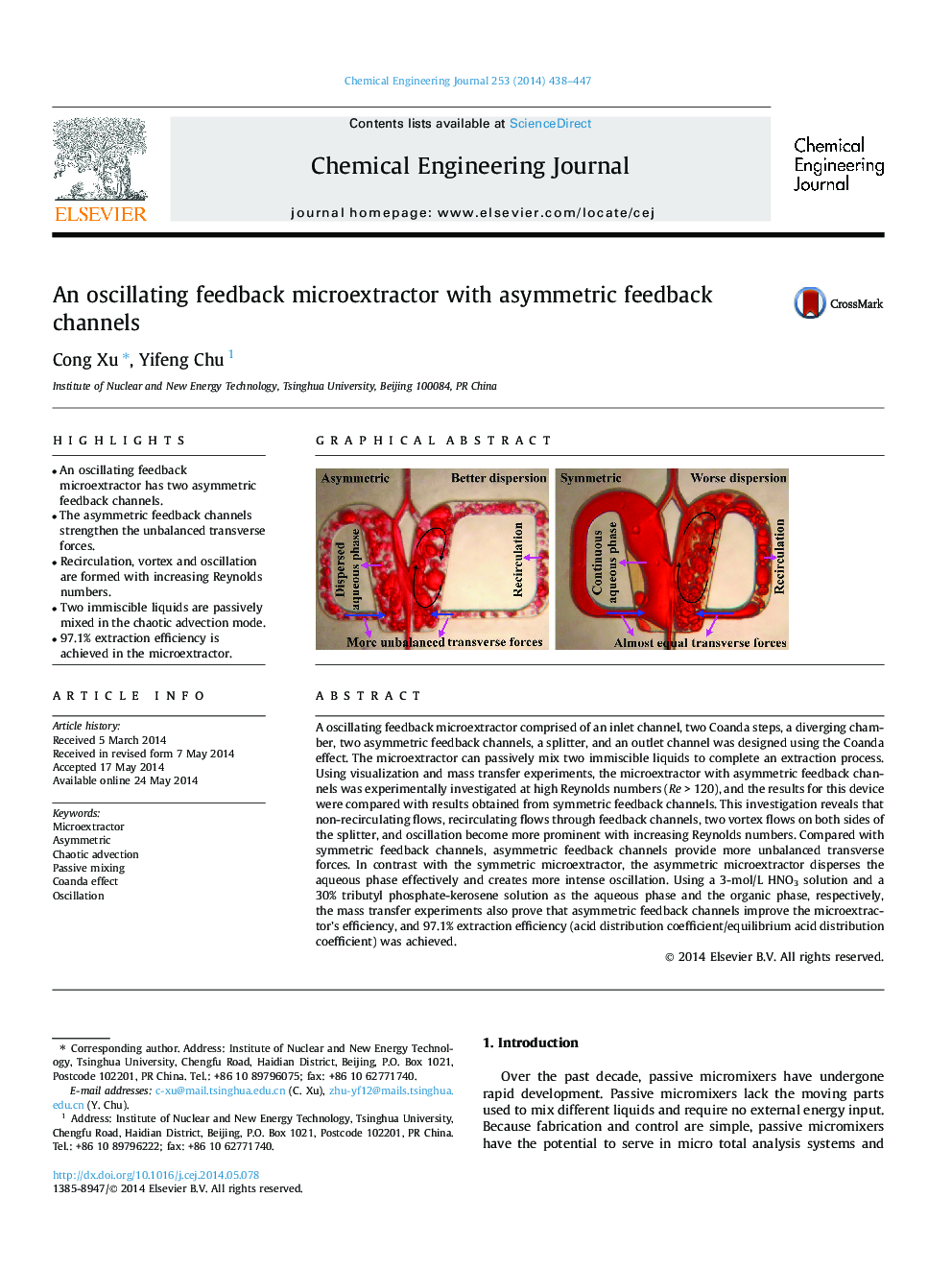| Article ID | Journal | Published Year | Pages | File Type |
|---|---|---|---|---|
| 147217 | Chemical Engineering Journal | 2014 | 10 Pages |
•An oscillating feedback microextractor has two asymmetric feedback channels.•The asymmetric feedback channels strengthen the unbalanced transverse forces.•Recirculation, vortex and oscillation are formed with increasing Reynolds numbers.•Two immiscible liquids are passively mixed in the chaotic advection mode.•97.1% extraction efficiency is achieved in the microextractor.
A oscillating feedback microextractor comprised of an inlet channel, two Coanda steps, a diverging chamber, two asymmetric feedback channels, a splitter, and an outlet channel was designed using the Coanda effect. The microextractor can passively mix two immiscible liquids to complete an extraction process. Using visualization and mass transfer experiments, the microextractor with asymmetric feedback channels was experimentally investigated at high Reynolds numbers (Re > 120), and the results for this device were compared with results obtained from symmetric feedback channels. This investigation reveals that non-recirculating flows, recirculating flows through feedback channels, two vortex flows on both sides of the splitter, and oscillation become more prominent with increasing Reynolds numbers. Compared with symmetric feedback channels, asymmetric feedback channels provide more unbalanced transverse forces. In contrast with the symmetric microextractor, the asymmetric microextractor disperses the aqueous phase effectively and creates more intense oscillation. Using a 3-mol/L HNO3 solution and a 30% tributyl phosphate-kerosene solution as the aqueous phase and the organic phase, respectively, the mass transfer experiments also prove that asymmetric feedback channels improve the microextractor’s efficiency, and 97.1% extraction efficiency (acid distribution coefficient/equilibrium acid distribution coefficient) was achieved.
Graphical abstractFigure optionsDownload full-size imageDownload as PowerPoint slide
